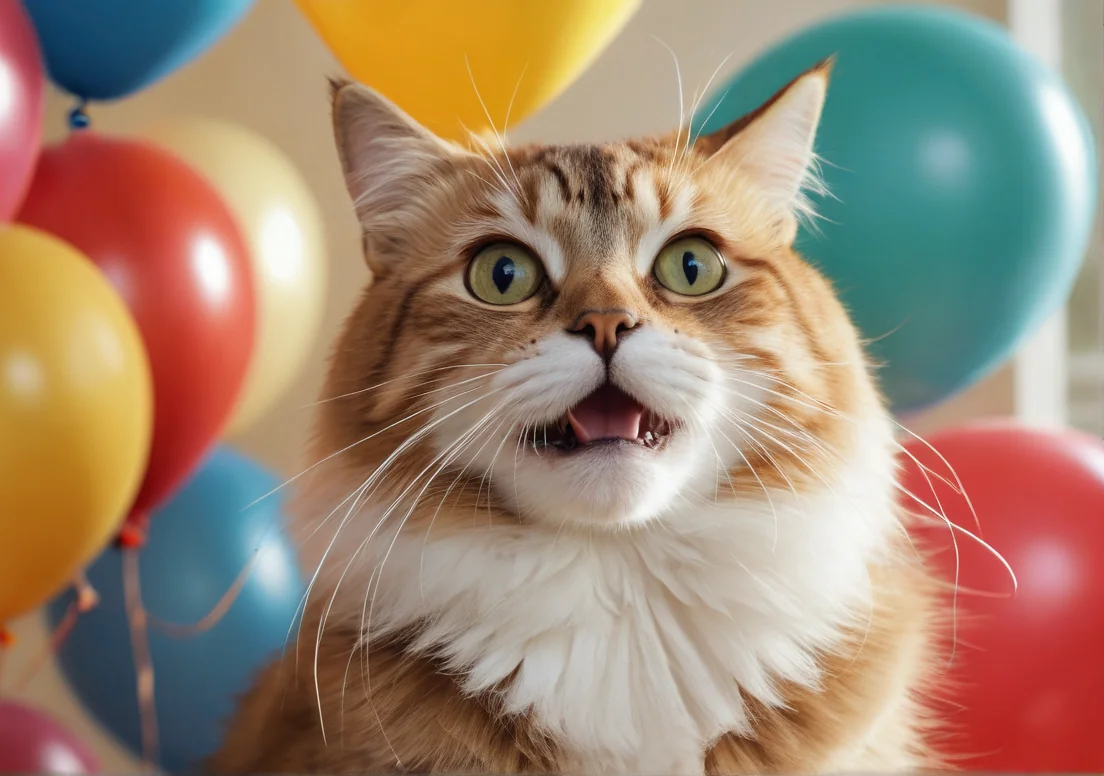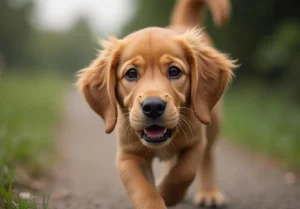Cats and balloons don’t mix. The sight of a floating, colorful, unfamiliar object sends many felines dashing for cover. But what’s behind this dramatic reaction?
Cats are instinctively wired to respond to potential threats in their environment. Balloons, with their unpredictable movements, bright colors, and strange textures, can trigger a cat’s inherent flight response, making them feel uneasy or threatened. There’s a captivating science behind this behavior, and as we explore further, you’ll uncover surprising insights that go beyond the obvious.

What Makes Balloons So Scary for Cats
Balloons hold an unsettling presence for many cats due to a combination of their movement, size, and sound. The way a balloon floats and bobs around can mimic the erratic movements of prey, which might trigger a cat’s instinct to pounce or flee. Additionally, their bright colors can be visually striking, but that also makes them seem foreign and alarming.
A balloon’s surface is particularly reflective, catching light in unpredictable ways. This can create sudden flashes that might startle a kitty, making it hard for them to gauge whether it’s a threat. The sound of a balloon—especially when it squeaks or pops—can be jarring. Cats have sensitive hearing, so any loud, unexpected noise can send them running for cover.
Moreover, the simple unpredictability of balloons—as they can roll or move unexpectedly—adds to their fear factor. Unlike static toys that remain in one place, balloons don’t follow the rules of what cats expect from their environment. This uncertainty plays a significant role in why many cats would rather avoid balloons altogether.
Do All Cats React Similarly to Balloons
The truth is, not all felines share the same balloon dread. Individual reactions can vary dramatically based on a cat’s breed, personality, and previous experiences. For instance, curious breeds like Siamese or Abyssinians might be more inclined to approach a balloon out of curiosity, while more timid breeds such as Ragdolls could prefer to steer clear entirely.
Factors that influence reactions to balloons include:
– Personality: Shy or anxious cats may perceive balloons as more threatening than their bolder counterparts.
– Age: Kittens, with their playful nature, might be less fearful, viewing balloons as a novel toy rather than a potential danger.
– Past Experiences: Cats that have previously encountered balloons—whether positively or negatively—will likely have a distinct perspective. A cat that had a favorable interaction might be less scared compared to one that faced a balloon popping unexpectedly.
– Environment: Cats that grow up in busy, chaotic households may become desensitized to stimuli like balloons, while others in quieter environments could view them as strange intruders.
Understanding these individual preferences can help create a more comfortable space for your pet. Introducing balloons slowly and observing their reactions might reveal some surprises—your once terrified cat could turn into a playful balloon chaser with the right approach!
How Do Colors and Patterns Affect Cat Behavior
Cats are incredibly sensitive to color and patterns, which can significantly influence their reactions to objects like balloons. While there’s no definitive color scheme that terrifies every cat, certain hues might evoke caution or anxiety. For instance, bright colors like red, yellow, or orange can appear overly intense and startling to them. These bold shades might be equated with danger—similar to how an animal would react in the wild to vivid signs of a predator.
Patterns matter too; stripes or polka dots can confuse or disorient a cat. Cats rely heavily on their ability to assess their environment quickly, and if a balloon’s pattern catches them off guard or appears chaotic, it can trigger their instinct to flee. This visual apprehension is compounded in an environment that’s usually perceived as safe.
When bringing balloons around your cat, consider opting for more muted colors or simple designs. This small change can help reduce their anxiety significantly. Observing your cat’s behavior can offer clues; if they back away or flatten their ears when they see a balloon, it’s safe to say that color and pattern have struck a nerve.
What Sounds Do Balloons Make that Frighten Cats
Balloons don’t just look intimidating; they can sound frightening too. The crinkling and popping noises they make can send a cat into a panic. These sounds can mimic the noises of animals in distress or sudden environmental changes—both of which are common threats in nature.
When a balloon moves, it produces rustling sounds as the air shifts inside or when it brushes against surfaces. Cats, with their acute hearing, may perceive these noises as sudden—potentially life-threatening—threats rather than harmless party decorations. The rattle of the balloon can be particularly scary if the cat is already on edge or in a new environment.
Here are a few sound-related factors that contribute to a cat’s fear of balloons:
- Popping noises: Resemble gunshots or sudden loud sounds that can trigger a flight response.
- Rustling: Mimics the movements of grass or leaves, causing confusion or anxiety about potential predators.
- Air movement: The whoosh of air escaping a balloon can mimic the sound of an approaching danger.
Understanding these sound cues can help you alleviate your cat’s unease. If your pet seems particularly unsettled around balloons, it might be wiser to keep them in another room until celebrations are over. If you want your cat to feel more secure, you could also create a safe space with some cozy blankets and toys, giving them a hideout from unexpected noises.
Can a Cat’s Body Language Reveal Its Fear of Balloons
Cats are remarkably expressive creatures, and their body language can tell you a lot about how they feel, especially when it comes to unexpected items like balloons. When a cat encounters a balloon, it may exhibit several signs of distress or anxiety. For example, a cat might flatten its ears against its head, arch its back, or puff up its fur. These behaviors indicate a defensive posture, signaling that your feline friend feels threatened.
You may also notice a cat’s tail position change when it sees a balloon. A high, twitching tail often reflects curiosity, but if the tail drops or becomes puffed up, that’s more of a fear response. Additionally, the cat might start backing away or hiding, preferring to stay out of the balloon’s path.
Sometimes, when the balloon floats or pops, the sudden movement or loud noise can amplify its fear, leading to behaviors like running away or hiding. Understanding these signals can help you create a more comfortable environment for your cat, minimizing encounters with balloons that might set off their anxiety.
What Other Common Items Scare Cats
Besides balloons, there’s a variety of everyday items that can leave cats feeling unnerved. Here is a list of some common household objects that may evoke fear in our feline companions:
- Vacuum Cleaners: The loud noise and unpredictable movement can be overwhelming.
- Plastic Bags: The rustling sound and the potential for getting stuck can make them anxiety-inducing.
- Brooms and Mops: The sweeping motion can be alarming, mimicking a larger predator.
- Loud Sounds: Thunder, fireworks, or even a doorbell can send cats into hiding.
- Strange People or Pets: New faces in the home can trigger their instinct to flee or hide.
Understanding what scares your cat not only helps in creating a safe environment but also allows you to train and desensitize them to some of these items gradually. Always approach fear-inducing items with sensitivity, allowing your cat to explore at its own pace.
How to Safely Introduce Balloons to Your Cat
Balloons might seem harmless, but for many cats, they can be intimidating due to their size, movement, and unexpected noises when they pop. To introduce a balloon in a low-stress way, create a calm atmosphere. Start by inflating a balloon in a separate room, allowing your cat to hear the sound without direct interaction.
Once the balloon is inflated, allow your cat to observe from a distance. Pay attention to its body language—if your feline seems curious, gently roll the balloon closer. Keep a lighthearted tone and reward your cat with treats and praise for being brave, reinforcing positive associations with the balloon.
Consider these specific tips when introducing balloons to your cat:
- Choose the right size: Start with smaller balloons, which are less intimidating for your pet.
- Keep it stable: Secure the balloon to a weight or surface, reducing sudden movement that might startle your cat.
- Use string: Attach a piece of string to the balloon, allowing your cat to interact while keeping it from flying away.
- Timing is key: Introduce balloons during a calm time in your cat’s day, avoiding moments of anxiety or excitement.
Lastly, always supervise the interaction. If your cat shows signs of distress, it’s best to pull back and try again later.
Are There Ways to Help a Cat Overcome Its Fear of Balloons
Overcoming a cat’s fear of balloons can be a gradual process, rooted in positive experiences. Begin by gradually exposing your cat to the balloon gradually. This can involve using a calm voice and treats to create a comforting environment.
Consider the following strategies:
Desensitization : Place the balloon in a room where your cat feels comfortable, allowing it to explore the area while the balloon remains out of reach.
Pair positive experiences : Whenever the balloon is around, engage your cat in play or provide its favorite treat, helping to associate the balloon with enjoyable outcomes.
Slow introductions : Introduce balloons at further distances initially. Gradually decrease the distance over sessions, letting your cat take the lead.
Utilize toys : Use balloon-like toys to help your cat become accustomed to the shape and texture without the fear of the balloon.
Be patient : Understand that overcoming anxiety takes time. Don’t rush the process; a gentle approach will yield better results.
Each cat has its unique personality and will react differently. Observing your cat and adjusting your techniques accordingly can be crucial in helping them feel secure around balloons. With patience and positive reinforcement, your cat can learn that balloons aren’t all that scary after all.
Interesting Facts About Cats and Their Fear Responses
Cats can be quite the sensitive souls, and their fear of balloons is a fascinating reflection of their instincts. Despite their curious nature, many felines react like they’re facing an unexpected threat when they see a balloon. This is largely due to sudden movements and unfamiliar shapes that balloon introduce.
Interestingly, research indicates that about 70% of cats display anxiety towards unfamiliar objects, and balloons, with their unpredictable bounciness and startling pops, fit this bill perfectly. It’s not just the visuals; the noise a balloon makes when it pops triggers their primal survival instinct. After all, sharp, loud sounds in the wild can signal danger, so it’s understandable why a burst balloon might send a cat scrambling for cover.
Some additional notes on feline fears:
- Shape Sensitivity: Cats tend to be cautious around objects that deviate from commonly recognized shapes. Balloons can look threatening because they float and move unexpectedly.
- Heightened Senses: Cats have incredibly acute hearing. A balloon hustling through the air or the sound of it popping can be jarring, resulting in stress.
- Early Experiences: A cat that had a negative encounter with a similar object in its early life is likely to develop a lasting aversion to balloons.
Understanding these quirky feline tendencies can help create a more soothing environment for your kitty, perhaps avoiding balloons in their vicinity or gradually acclimating them to safe, non-threatening objects.
Alex, a passionate animal lover, has experience in training and understanding animal behavior. As a proud pet parent to two dogs and three cats, he founded AnimalReport.net to share insights from animal experts and expand his knowledge of the animal kingdom.




